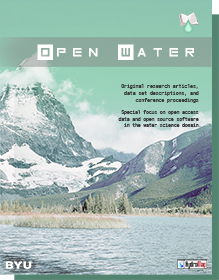Abstract
The Sensor Web is an emerging technology concept that promises to revolutionise the way water information is collected and disseminated. A Sensor Web is a group of interoperable web services, which all comply with a specific set of information models and interface specifications. The Open Geospatial Consortium (OGC) is developing information models and service interface specifications for Sensor Web Enablement (SWE). These standards and specifications provide the basic building blocks for Sensor Webs. SWE is an approach to break down information silos, improve availability of data from sensors and promote the development of new applications that are driven by real-time real world information.
The Commonwealth Scientific and Industrial Research Organisation (CSIRO) is profiling the SWE standards to allow correct encoding and transmission of water information: A Hydrological Sensor Web has been established in the South Esk river catchment in north-eastern Tasmania to test the SWE standards. The Hydrological Sensor Web has been configured to provide enhanced near real-time situation awareness of water flow across the South Esk river catchment.
What the Hydrological Sensor Web provides is an interoperability layer that aggregates sensor assets owned and operated by multiple agencies into a seamless heterogeneous sensor network offering significant benefits in terms of redundancy, richer data sources, uniform access and a common interface. It facilitates the sharing of sensor information without the need for huge infrastructure projects to replace legacy systems. Observations from a range of sensor devices, such as tipping-bucket rain gauges, river water-level sensors, automatic weather stations and soil moisture sensors, can be shared between organisations with remarkably different water information systems. This provides opportunities for data re-use, redundancy, and improved reliability of simulation models connected to the Sensor Web.
Hydrological Sensor Webs not only provide vital information for maintaining environmental flows, managing water restrictions, managing water storages, and mitigating flood risk, but can also result in significant cost savings through a reduction in the parallel expansion of sensor networks maintained by different organisations.
BYU ScholarsArchive Citation
Terhorst, Andrew; Taylor, Peter; Lee, Brad; Peters, Chris; and Malewski, Christian
(2011)
"Enabling Near Real-Time Water Resource Management via The Sensor Web,"
Open Water Journal: Vol. 1:
Iss.
1, Article 4.
Available at:
https://scholarsarchive.byu.edu/openwater/vol1/iss1/4
